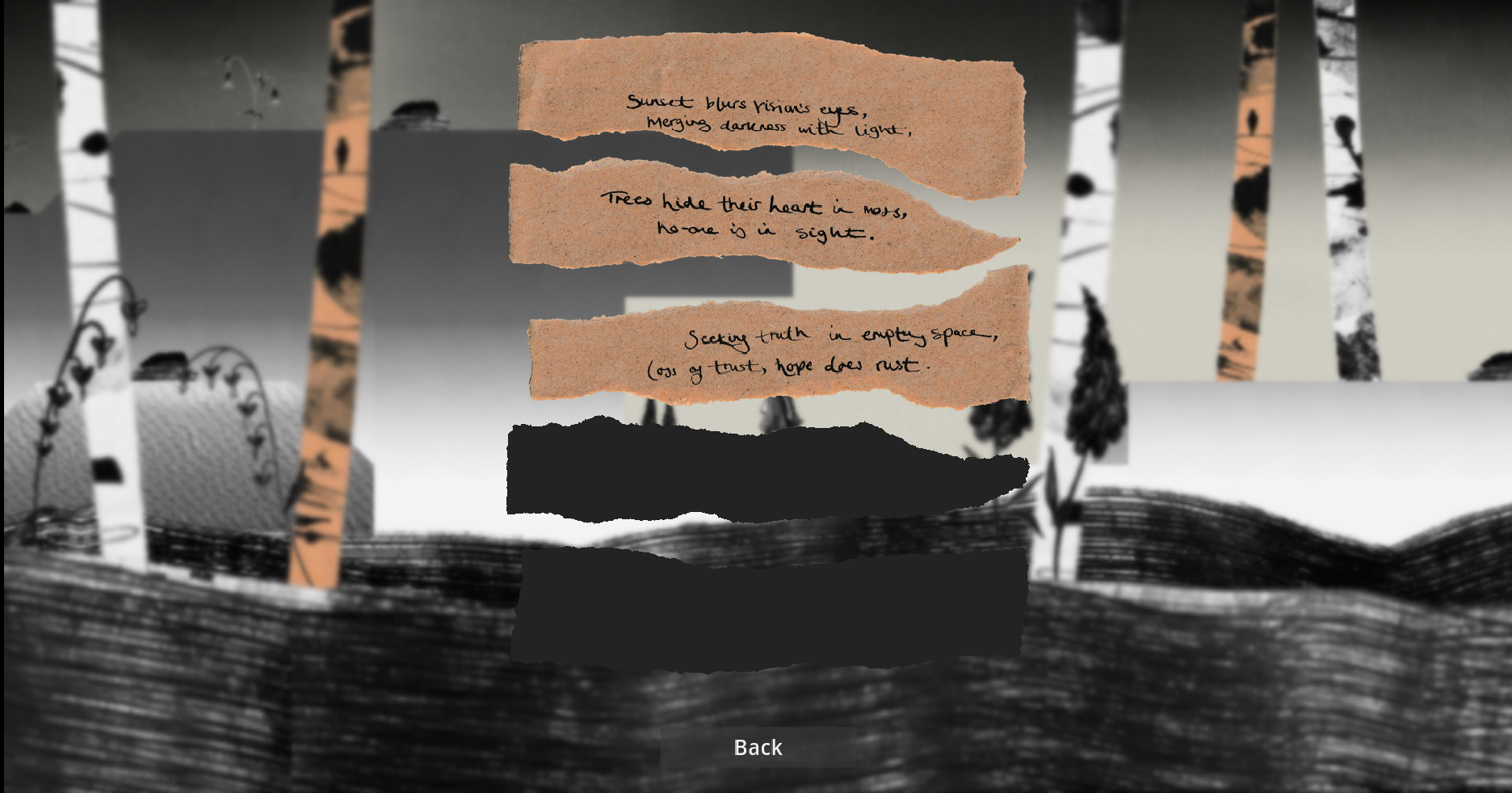
Skills: Game Design / Narrative Design / Level Design / Concept Art / Sound Design / Godot / Adobe photoshop / Adobe Premiere Pro / Rebelle 7 / GDScript
Nullamo is a 2D adventure side-scroller that combines unique gameplay mechanics with a world brimming with metaphors and deeper meaning through a unique artistic lens. Blending the enjoyment of a walking simulator with the intrigue of an adventure game, it invites players into an immersive narrative experience where every element of the world — from the environments to the mise-en-scène — tells a story.
The name Nullamo combines the Latin words for “nothing” (null) and “love” (amo), capturing the game’s core themes. Set within the mind of a girl who has never experienced physical touch (therefore, she has “nothing” to “love”), players take on the role of a child representing her inner thoughts and emotions. As they navigate this surreal world, they must collect fragments of a poem that provide strength, light, and warmth, empowering the protagonist to push forward through her struggles. Without pieces of the poem, the player character will ultimately succumb to the darkness of a world without touch.
This single-player game offers a deeply emotional journey, enhanced by hand-painted environments and narrative-driven gameplay. Drawing inspiration from the metaphorical world of Gris, the explorative world of Journey, and the darker, thought-provoking visuals of Limbo, Nullamo creates a uniquely satisfying and rewarding experience for players.
Nullamo is my second solo game project, following on from Whisp. This project allowed me to push myself creatively and fully express my skills as an artist, level designer, and game designer.
Made in the course of two months in my final year of university, Nullamo was also an opportunity to expand on my technical abilities. I delved into the Godot engine and began to learn GDScript from tutorials, applying these new skills to create this atmospheric and explorative walking simulator. Beyond coding, I created all of the game’s visual elements, using both traditional pen and paper, alongside digital painting in Rebelle 7 — a new tool for me at the time.
This project was aimed to be deeply personal to many, inspired by the isolation many experienced during the Covid-19 pandemic. Through research, I discovered numerous studies and reports on the emotional and psychological impact of isolation, which shaped my approach to this game in my research document. I sought to gamify these themes in a way that was both thought-provoking and empathetic, shedding light on a difficult subject through a medium that invites players to reflect and connect.
You can explore my research process in detail via the link below:


Before diving into the game engine, I dedicated significant time to developing and making the artistic vision of Nullamo come to life, as its visual elements were a key part of the game’s experience. During this phase, I filled an entire sketchbook with design iterations, experimenting with different styles and processes. My goal was to create a world made entirely of hand-drawn elements, reflecting the raw emotions of the player character and immersing players in the heartfelt narrative.
When I discovered Rebelle 7, I realized I could achieve the same hand-drawn look and feel I was desiring, digitally and more efficiently. This not only streamlined the design process but also allowed me to create detailed tile maps, sprites, and environmental elements that retained the organic, hand-crafted feel I had envisioned. I’m proud of how the game’s aesthetic turned out, as it embodies my artistic approach and demonstrates my creative eye both within and beyond game design.
This project felt like a full-circle moment for me. It allowed me to draw inspiration from my foundation course in art and design, while tying in the skills and values I’d learnt throughout university. As someone who began their creative journey with illustration, Nullamo represents how far I’ve come while staying true to the core passions that guided me from the start.
Over the course of my time at university, I’ve explored countless new tools and skills — from Unreal Engine and Photoshop to Maya and Godot. Nullamo gave me the opportunity to bring all of these experiences together into one project. It allowed me to channel my passion for creating meaningful change with the aspiration to further apply it to my creative practice within the gaming industry. Nullamo is not only a game that resonates emotionally with players, but is also showcases the practical skills I’ve developed and my keen eye for design.
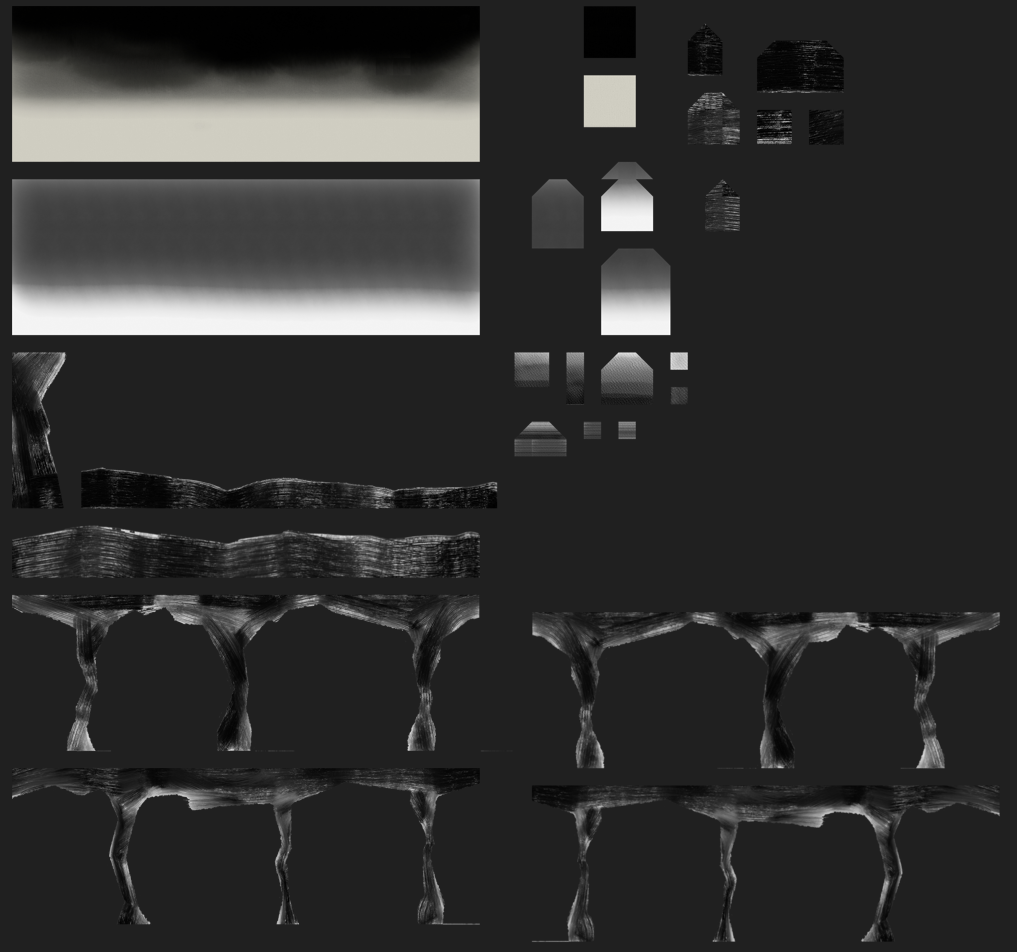
Tilemap drawn using Rebelle 7, edited in Photoshop
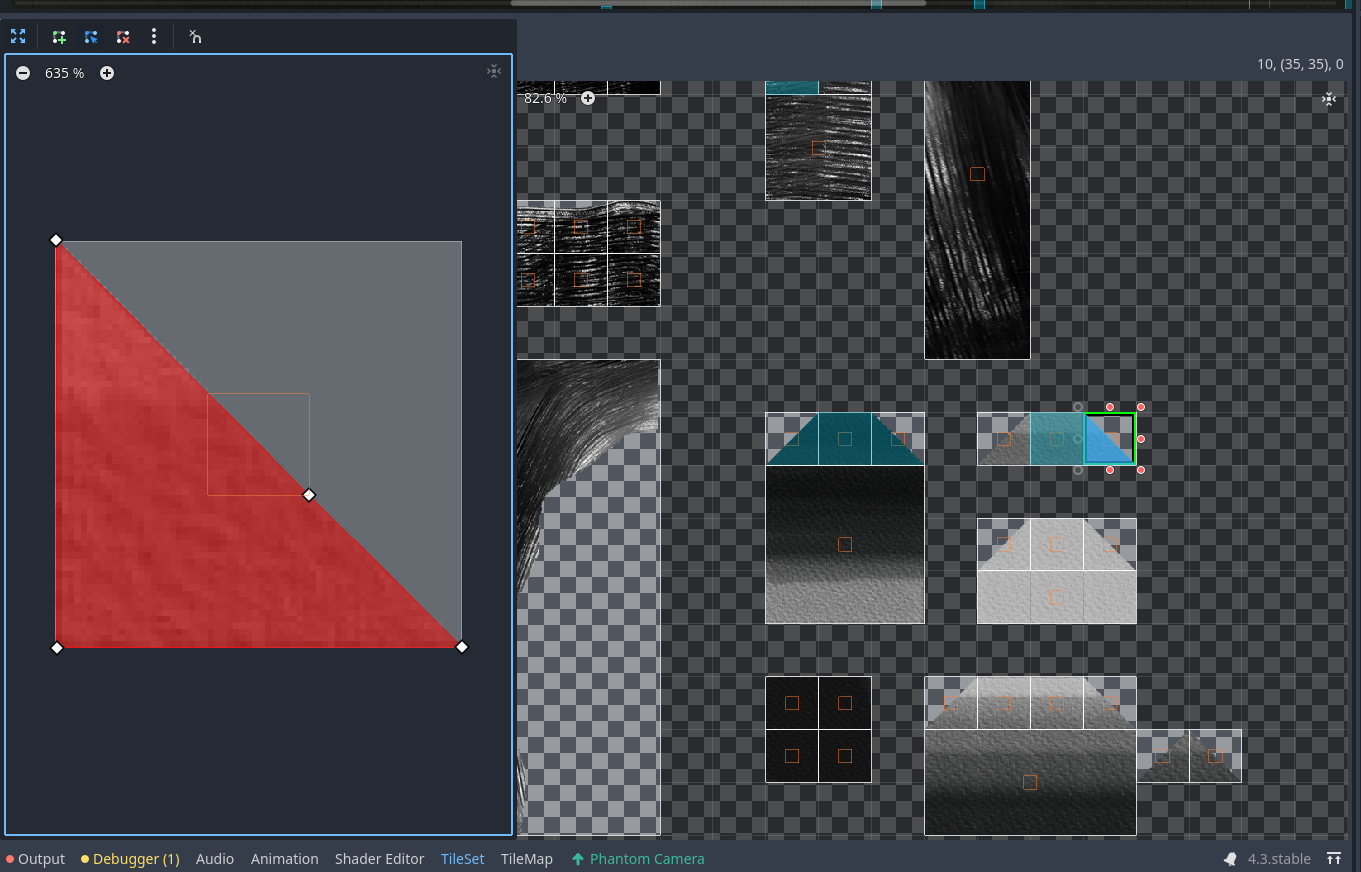
Aligning collision mappings to the ground tiles
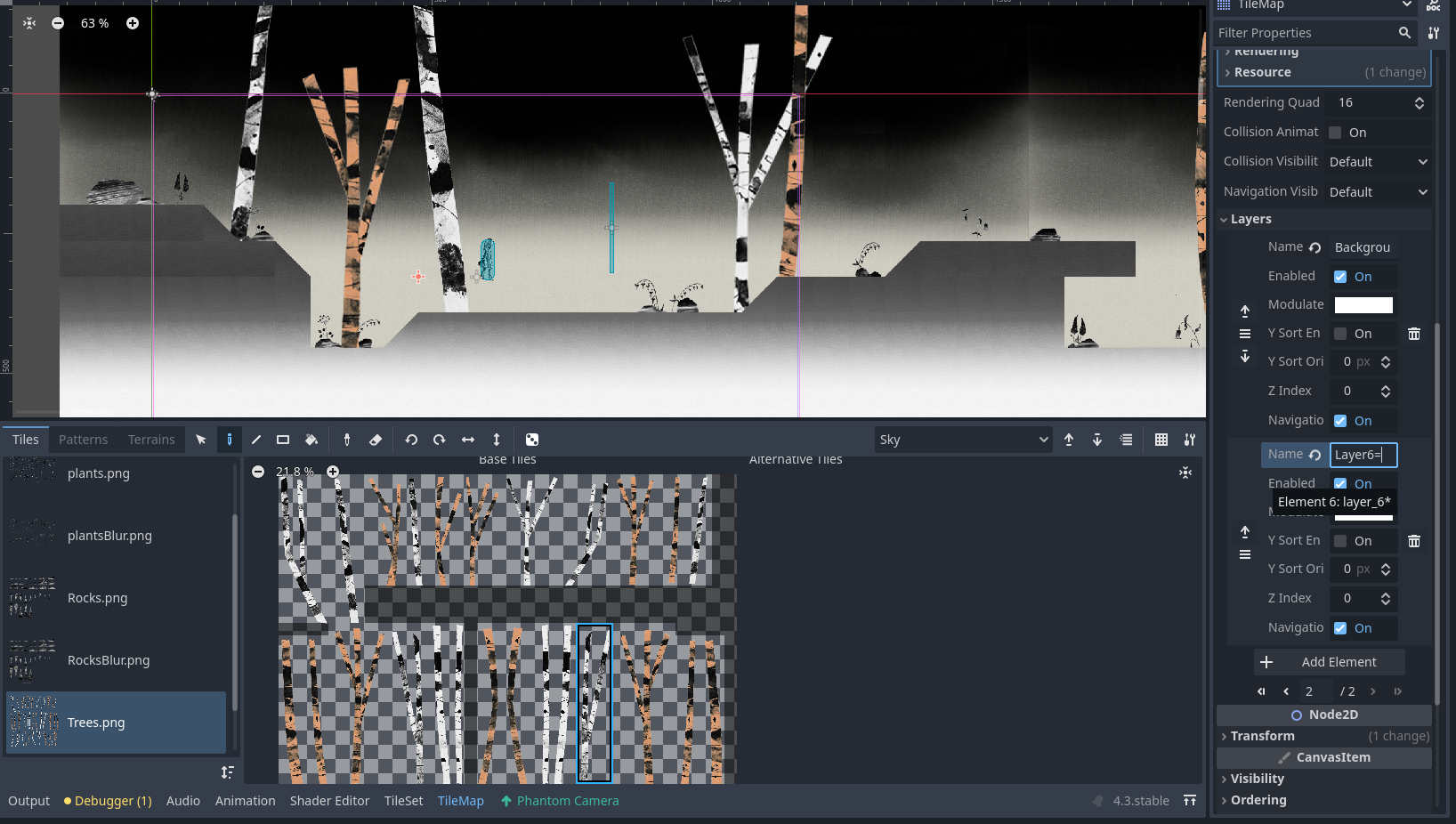
Level Designing
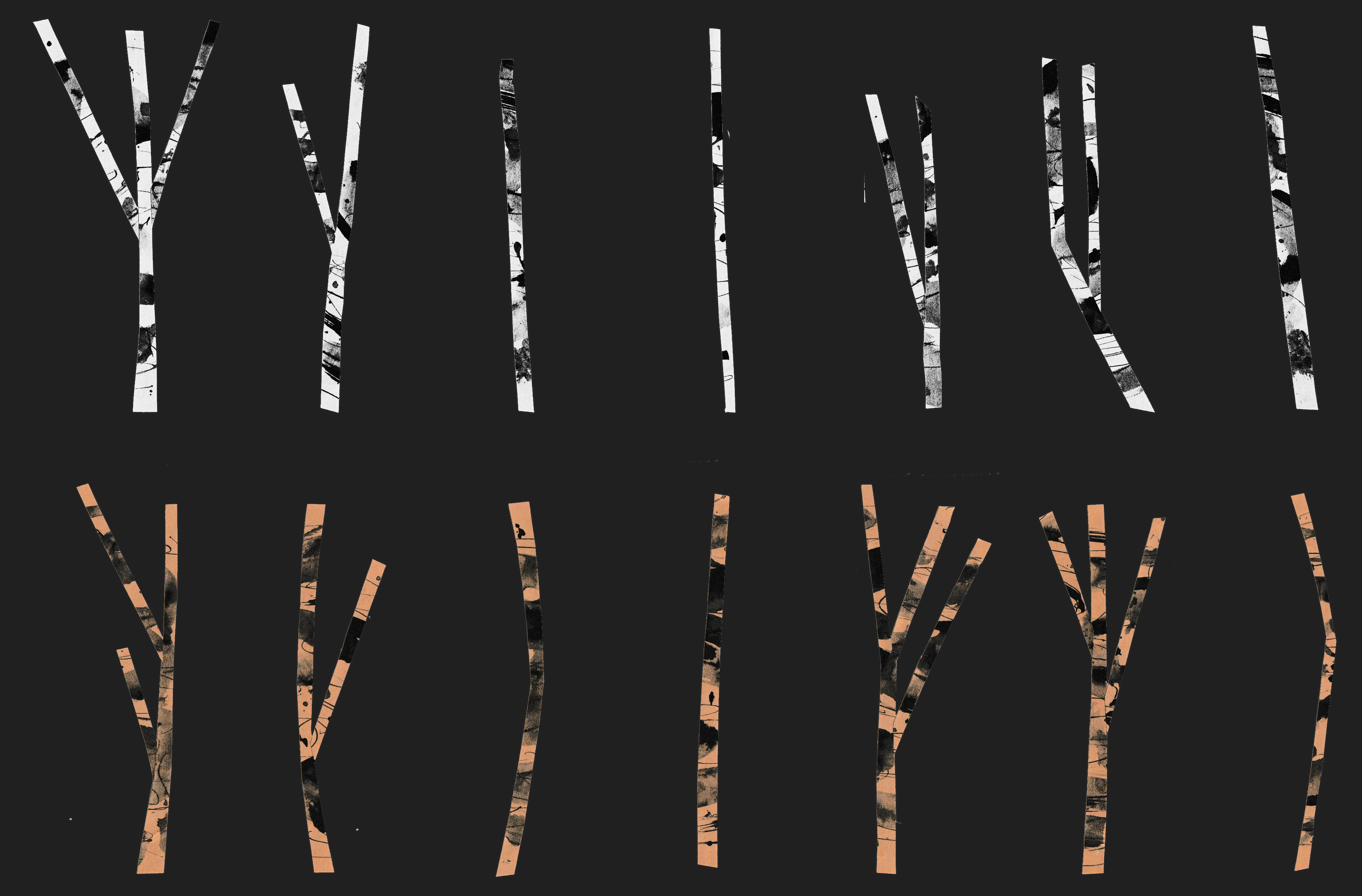
Scanning in hand-drawn props for the level
Using Godot for the first time was both a challenge and a rewarding learning experience. I sought guidance from my peers at university and committed myself to a lot of independent study in order to successfully learn the fundamentals Godot. I embraced the learning process, taking my time to build confidence with the software and focusing on creating a polished, streamlined game. Whilst I acknowledge that with this project have only scratched the surface of Godot, I know it is a testimony to myself of what I am able to achieve when I put myself out there.
The project brief from my university only required us to create a “beautiful garden.” However, I wanted to take this concept further. I captured and compiled gameplay moments into a cohesive video game trailer (available at the top of this page), showcasing the immersive experience I had envisioned for Nullamo.
In addition to the visual and gameplay elements, I composed and produced the game’s music. The soundtrack, built around a simple chord progression I played on guitar, became a key element of the game, enhancing the overall feelings of immersion.
Below are screenshots from the game, one of which shows the moment after the player character picks up a piece of the poem. The second, is the player deep in the system of caves.
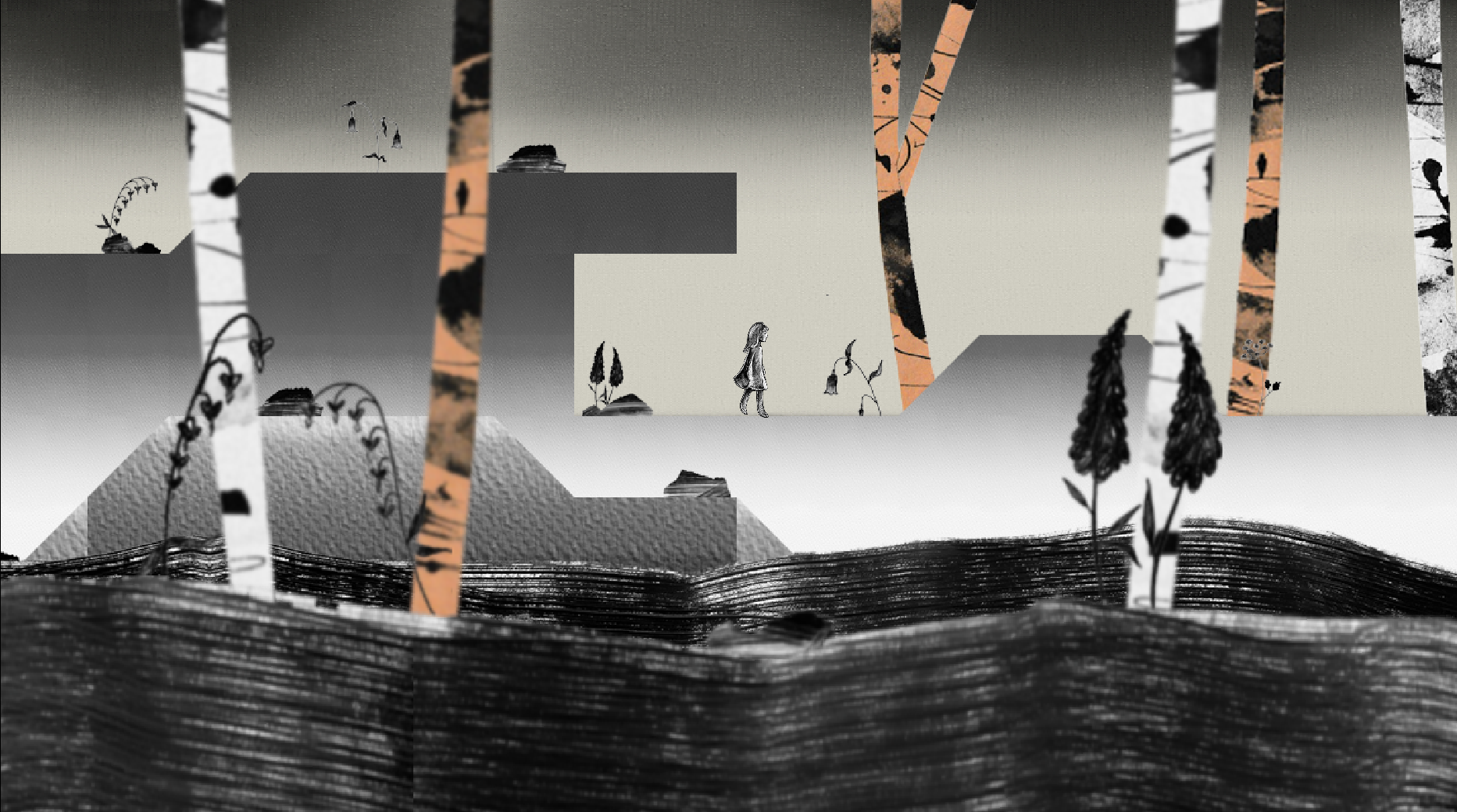
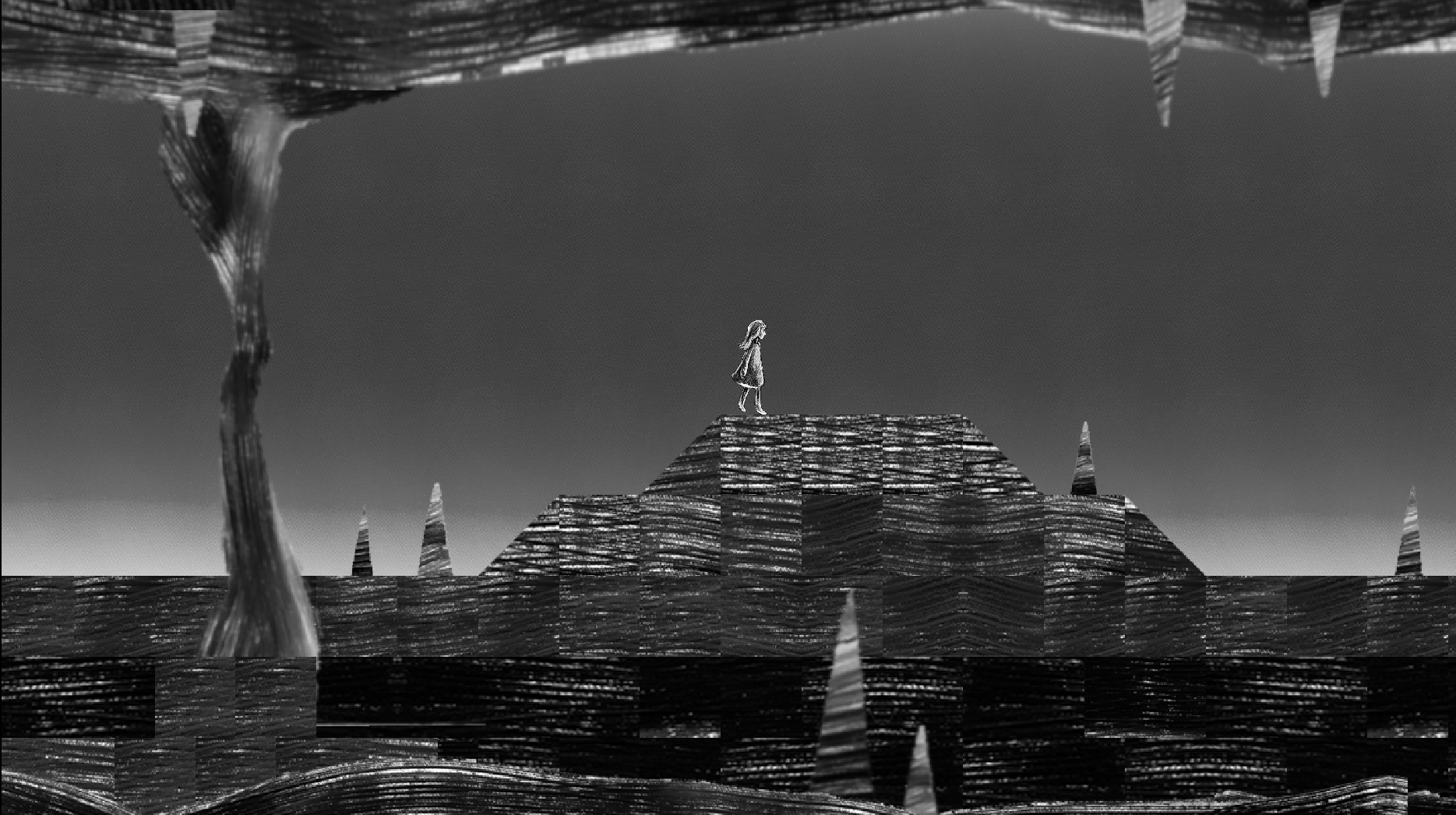
In Nullamo, light serves as the player’s source of energy and survival, symbolizing the power and importance of physical touch. Players gather light by collecting fragments of a poem, written for the game by my friend and published poet, Megan Mead. These poem pieces not only illuminate the world but also reflect the emotional journey of the protagonist.
At one pivotal moment in the game, the player character falls into a dark cave. Here, they are unable to find another piece of the poem, and their light begins to fade. Earlier in the game, players encountered an NPC trapped by a poisonous plant. Players must sacrifice a portion of their light to free this NPC, who then flees without offering thanks. The NPC, inspired by the mechanical toy used in Harry Harlow’s experiment on monkeys and their need for their mother’s intimacy, is initially perceived as nothing more than a monster.
In Nullamo, light serves as the player’s source of energy and survival, symbolizing the power and importance of physical touch. Players gather light by collecting fragments of a poem, written for the game by my friend and published poet, Megan Mead. These poem pieces not only illuminate the world but also reflect the emotional journey of the protagonist.
At one pivotal moment in the game, the player character falls into a dark cave. Here, they are unable to find another piece of the poem, and their light begins to fade. Earlier in the game, players encountered an NPC trapped by a poisonous plant. Players must sacrifice a portion of their light to free this NPC, who then flees without offering thanks. The NPC, inspired by the mechanical toy used in Harry Harlow’s experiment on monkeys and their need for their mother’s intimacy, is initially perceived as nothing more than a monster.
As the player struggles in the cave, seemingly without hope, the NPC reappears — this time offering the next piece of the poem. This moment illustrates a deeper theme: the protagonist has grown so accustomed to a life without physical touch which results in her perceiving those around her as monsters. It challenges players to question: without physical touch, can we truly connect with one another?
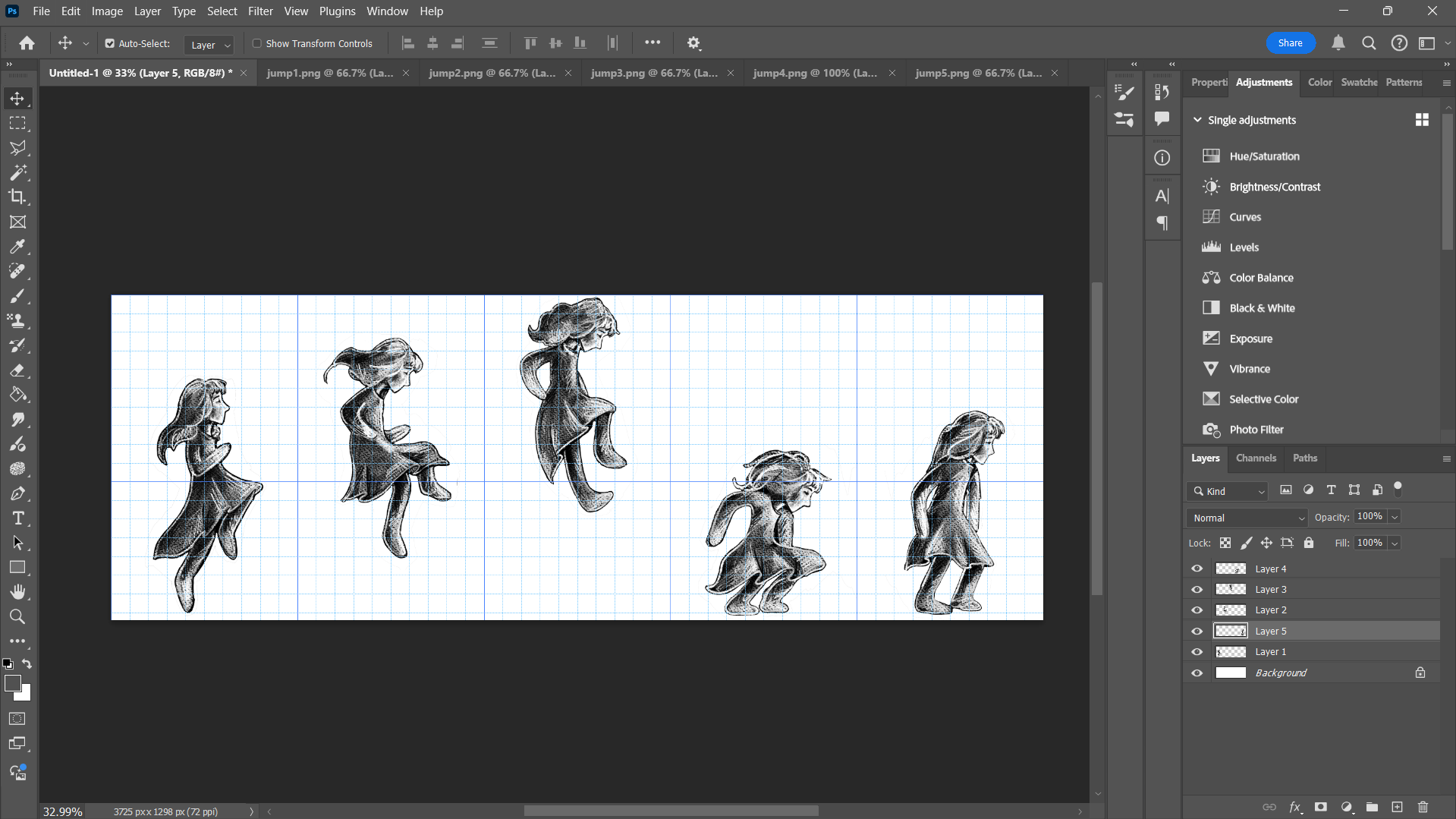
Creating sprite frames for "jump" animation
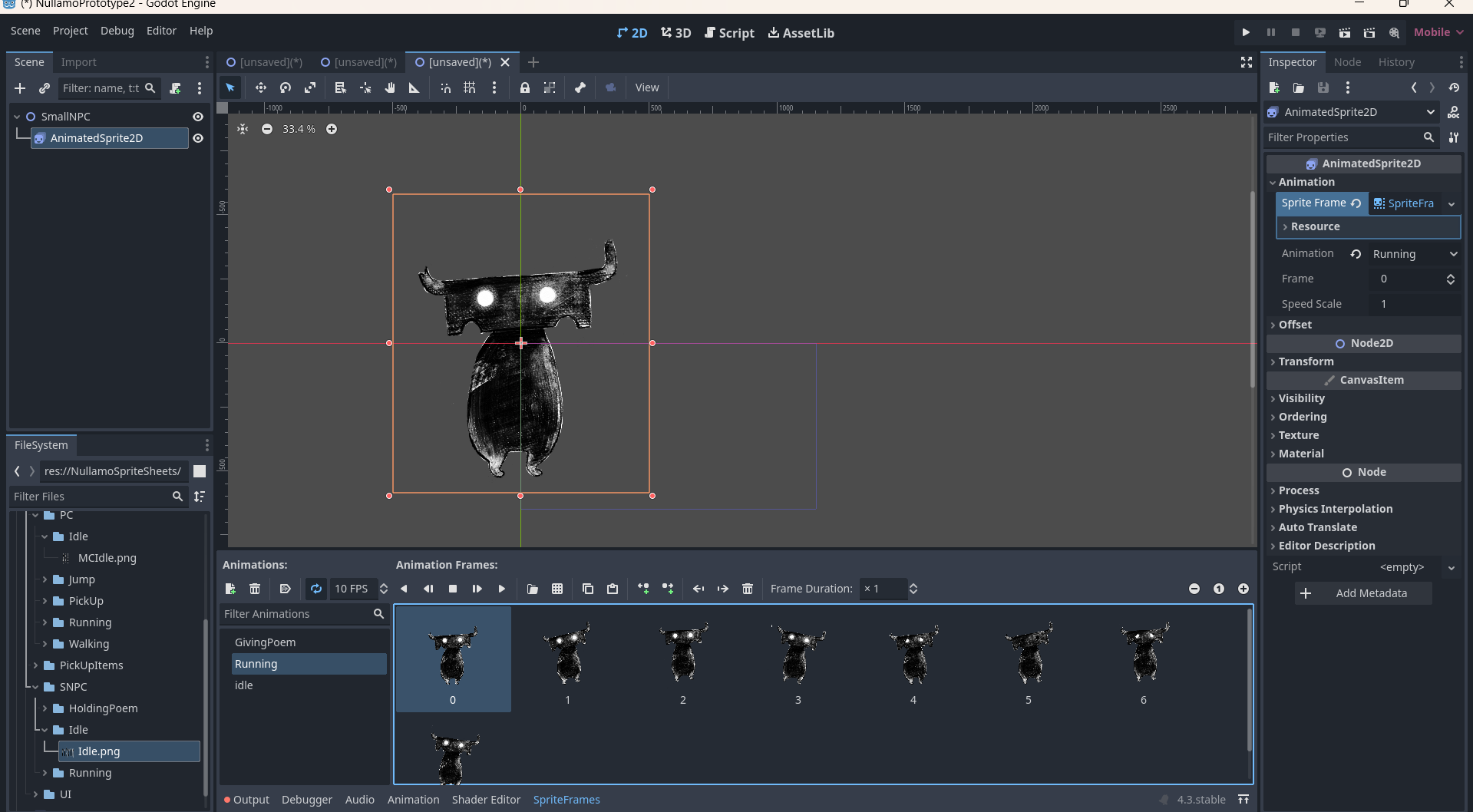
Animating character sprites
Throughout this project, I dedicated time to perfecting the animated sprites (shown above), ensuring they were polished and consistent with the game’s artistic style. Additionally, I explored advanced camera techniques by learning to use a Godot plugin called Phantom Camera. By following a detailed tutorial, I was able to create purposeful camera placements that enhanced the gameplay experience, rather than relying on Godot’s simple, built-in camera.
While implementing the camera system, I encountered a few coding challenges. To resolve these issues, I utilized AI tools to fix the code. With this support, I successfully implemented the desired functionality, achieving the tailored camera placement I had in mind. Below, you can see the behind-the-scenes of implementing this camera feature.

Using the Phantom Camera Plugin
Nullamo challenged me in many ways, pushing me out of my comfort zone and testing the limits of my skillset. Throughout this project, I acquired a range of valuable skills: scaling sprite frames and tile maps correctly in Adobe Photoshop, coding and using the Godot engine, exploring the artistic possibilities of Rebelle 7, and even dabbling in video production with Adobe Premiere Pro to create a polished game trailer. Each step of the process taught me something new and reinforced my passion for creating games that can inspire and impact others.
This project reaffirmed my belief in the power of games as a medium for positive change. One day, I hope to continue creating meaningful experiences like Nullamo — games that have the potential to leave a lasting impact on players and the world around them.
Now, as I near the end of my third year, I can see how my skills and passions have come together in a way that excites me for the future. I’m eager to see where this journey will lead and how I can continue to grow as a game designer and creative professional.
